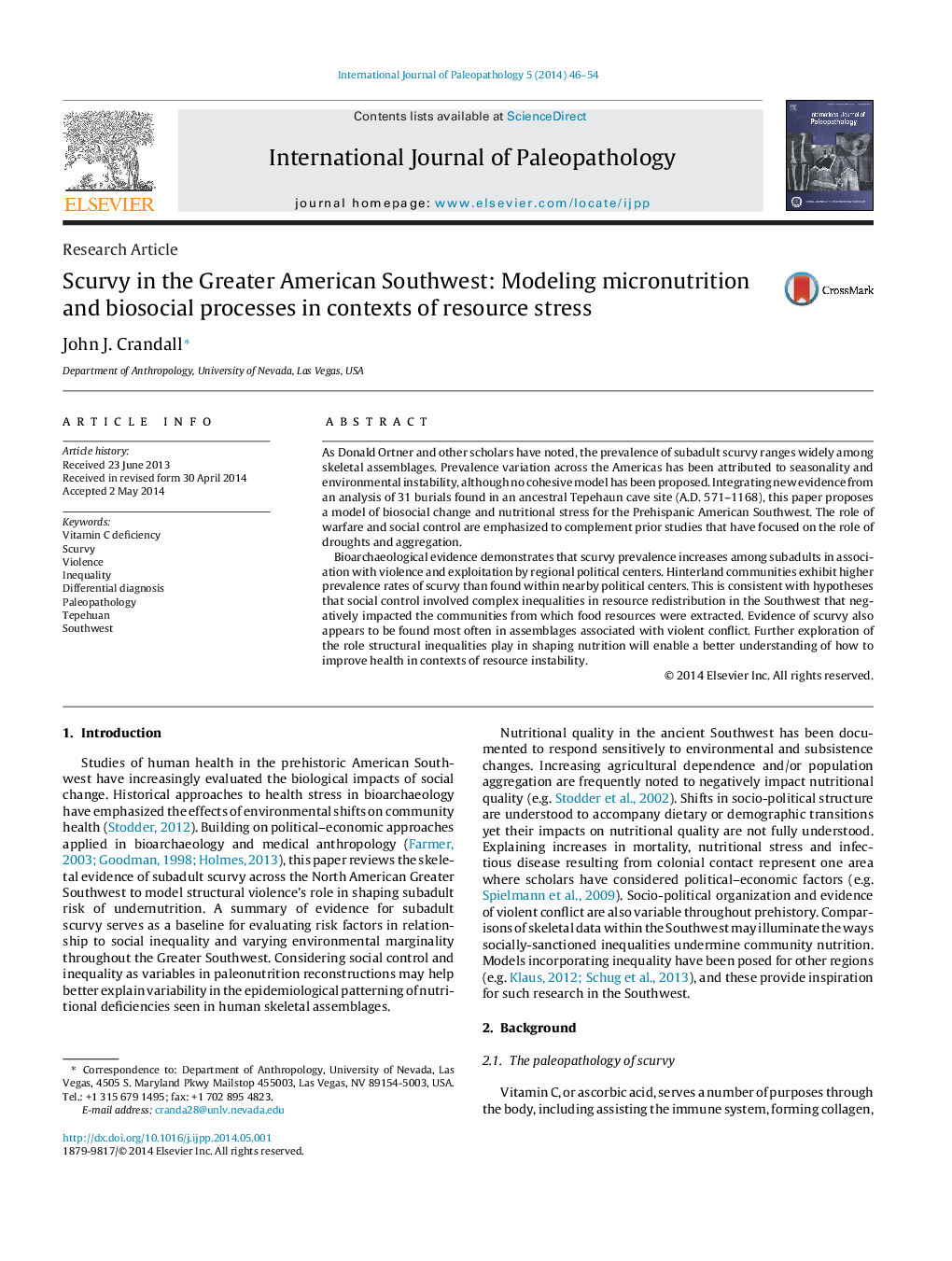| Article ID | Journal | Published Year | Pages | File Type |
|---|---|---|---|---|
| 6554871 | International Journal of Paleopathology | 2014 | 9 Pages |
Abstract
Bioarchaeological evidence demonstrates that scurvy prevalence increases among subadults in association with violence and exploitation by regional political centers. Hinterland communities exhibit higher prevalence rates of scurvy than found within nearby political centers. This is consistent with hypotheses that social control involved complex inequalities in resource redistribution in the Southwest that negatively impacted the communities from which food resources were extracted. Evidence of scurvy also appears to be found most often in assemblages associated with violent conflict. Further exploration of the role structural inequalities play in shaping nutrition will enable a better understanding of how to improve health in contexts of resource instability.
Related Topics
Life Sciences
Biochemistry, Genetics and Molecular Biology
Physiology
Authors
John J. Crandall,
